PROTECT YOUR DNA WITH QUANTUM TECHNOLOGY
Orgo-Life the new way to the future Advertising by AdpathwayUS Defence Secretary Pete Hegseth says that America "does not seek war" with Iran in the aftermath of the surprise attack on three of the country's nuclear sites.
The mission involved decoys and deception, and met with no Iranian resistance, Hegseth and Caine said.
 US Defence Secretary Pete Hegseth says that America "does not seek war" with Iran. (AP)
US Defence Secretary Pete Hegseth says that America "does not seek war" with Iran. (AP)"This mission was not and has not been about regime change," Hegseth added.
Iran's nuclear ambitions "have been obliterated", he said.
"The order we received from our commander in chief was focused, it was powerful, and it was clear," Hegseth said from the Pentagon podium.
"We devastated the Iranian nuclear program, but it's worth noting the operation did not target Iranian troops or the Iranian people. … Thanks to President Trump's bold and visionary leadership and his commitment to peace through strength, Iran's nuclear ambitions have been obliterated."
Final battle damage being assessed
Caine said the goal of the operation — destroying nuclear sites in Fordo, Natanz and Isfahan — had been achieved.
"Final battle damage will take some time, but initial battle damage assessments indicate that all three sites sustained extremely severe damage and destruction," Caine said.
Hegseth said that a choice to move a number of B-2 bombers from their base in Missouri earlier on Saturday was meant to be a decoy to throw off Iranians.
He added that the US used other methods of deception as well, deploying fighters to protect the B-2 bombers that dropped 14 bunker-buster bombs on Iran's most powerful nuclear site.
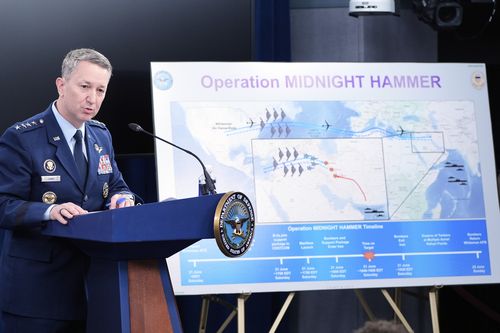 Joint Chiefs Chairman General Dan Caine speaks at the Pentagon in Washington. (AP)
Joint Chiefs Chairman General Dan Caine speaks at the Pentagon in Washington. (AP)He said that all of these tactics helped the US drop the bombs without tipping off Iran's fighter jets or its air missile systems.
US 'wants to negotiate with Iran'
US Vice President JD Vance said the strikes had given Tehran a renewed chance of negotiating with Washington.
He told NBC's Meet the Press that while he would not discuss "sensitive intelligence about what we've seen on the ground", he felt "very confident that we've substantially delayed their development of a nuclear weapon".
Pressed further, he said that "I think that we have really pushed their program back by a very long time. I think that it's going to be many many years before the Iranians are able to develop a nuclear weapon".
The vice president said the US had "negotiated aggressively" with Iran to try to find a peaceful settlement and that Trump made his decision after assessing the Iranians were not acting "in good faith".
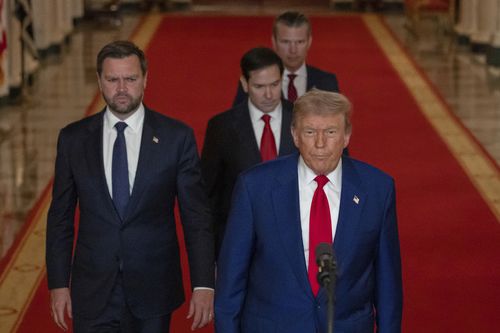 US Vice President JD Vance, on the left, said the strikes had given Tehran a renewed chance of negotiating with Washington. (AP)
US Vice President JD Vance, on the left, said the strikes had given Tehran a renewed chance of negotiating with Washington. (AP)"I actually think it provides an opportunity to reset this relationship, reset these negotiations and get us in a place where Iran can decide not to be a threat to its neighbors, not to a threat to the United States and if they're willing to do that, the United States is all ears," Vance said.
He said it would make sense for Iran to come to the negotiating table and give up their nuclear weapons program over the long term. "If they're willing to do that, they're going to find a willing partner in the United States of America," he said, describing a possible chance of a "reset" for Tehran.
Hegseth said the US was making multiple efforts to communicate with Iranian officials following the strikes as President Donald Trump and his top lieutenants called on the country to negotiate a diplomatic path forward.
"I can only confirm that there are both public and private messages being directly delivered to the Iranians in multiple channels, giving them every opportunity to come to the table," Hegseth said.
He continued, "They understand precisely what the American position is, precisely what steps they can take to allow for peace, and we hope they do so."
Iran says US 'crossed a very big red line'
Iran has criticised the US strikes as a violation of its sovereignty and international law.
Iran's foreign minister, Abbas Araghchi, said on Sunday that Washington was "fully responsible" for whatever actions Tehran may take in response.
"They crossed a very big red line by attacking nuclear facilities," he said at a news conference in Turkey.
"I don't know how much room is left for diplomacy."
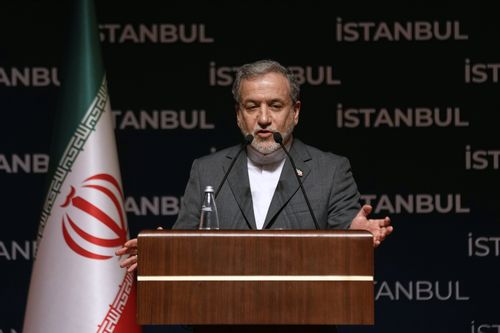 Iranian Foreign Minister Abbas Araghchi. (AP)
Iranian Foreign Minister Abbas Araghchi. (AP)Both Russia and China condemned the US attack. Araghchi said he would travel to Moscow later on Sunday to meet with Russian President Vladimir Putin.
A Turkish Foreign Ministry statement warned about the risk of the conflict spreading beyond the Middle East to "a global level".
Operation Midnight Hammer timeline
Midnight ET (2pm on Sunday AEST): The operation began overnight Friday into Saturday morning, Caine said at a Pentagon news conference. As B-2 bombers launched from the US, some headed west as a decoy while the rest "proceeded quietly to the east with minimal communications throughout the 18-hour flight".
About 5pm ET (7am on Sunday AEST): Caine said a US submarine "launched more than two dozen Tomahawk land attack cruise missiles against key surface infrastructure targets" at the Isfahan nuclear site in Iran.
As the B-2s entered Iranian airspace, the US "employed several deception tactics, including decoys, as the fourth- and fifth-generation aircraft pushed out in front of the strike package at high altitude and high speed, sweeping in front of the package for enemy fighters and surface-to-air missile threats," Caine said.
He added that upon approach of the Natanz and Fordow facilities, the US employed "high-speed suppression weapons" with fighter aircraft to "ensure safe passage" of the B-2 bombers.
About 6.40pm ET (8.40am on Sunday AEST): The lead B-2 bomber launched two massive bunker-buster bombs at Fordow nuclear site, Caine said, and the "remaining bombers then hit their targets".
Those additional targets were struck, Caine said, "between 6.40pm ET and 7.05pm ET" (8.40am and 9.05am on Sunday AEST).
That places the timing of these attacks about 2.10am local time in Iran on Sunday.
In total, Caine said, 16 GBU-57 Massive Ordnance Penetrators were dropped — two from the lead B-2 on Fordow, and 14 more from the remaining bombers against the two other sites.
Flight back to US: The US military then "began its return home", Caine said, noting that no shots were fired by Iran at the US on the way in or out.
- Additional reporting by Associated Press and CNN


 3 weeks ago
11
3 weeks ago
11
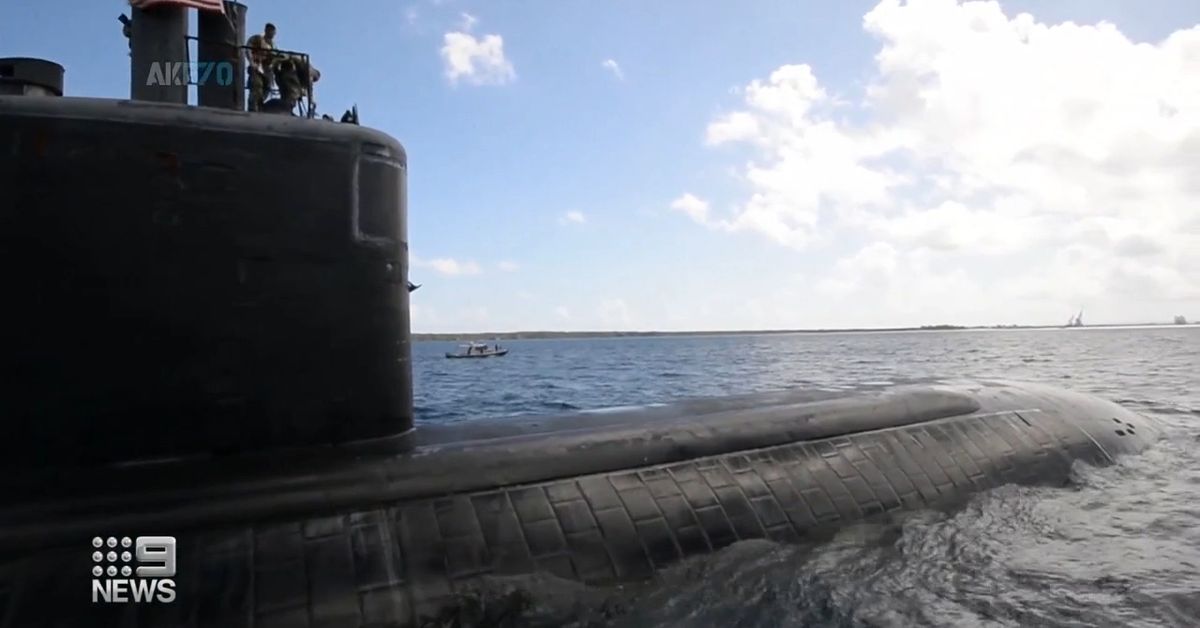

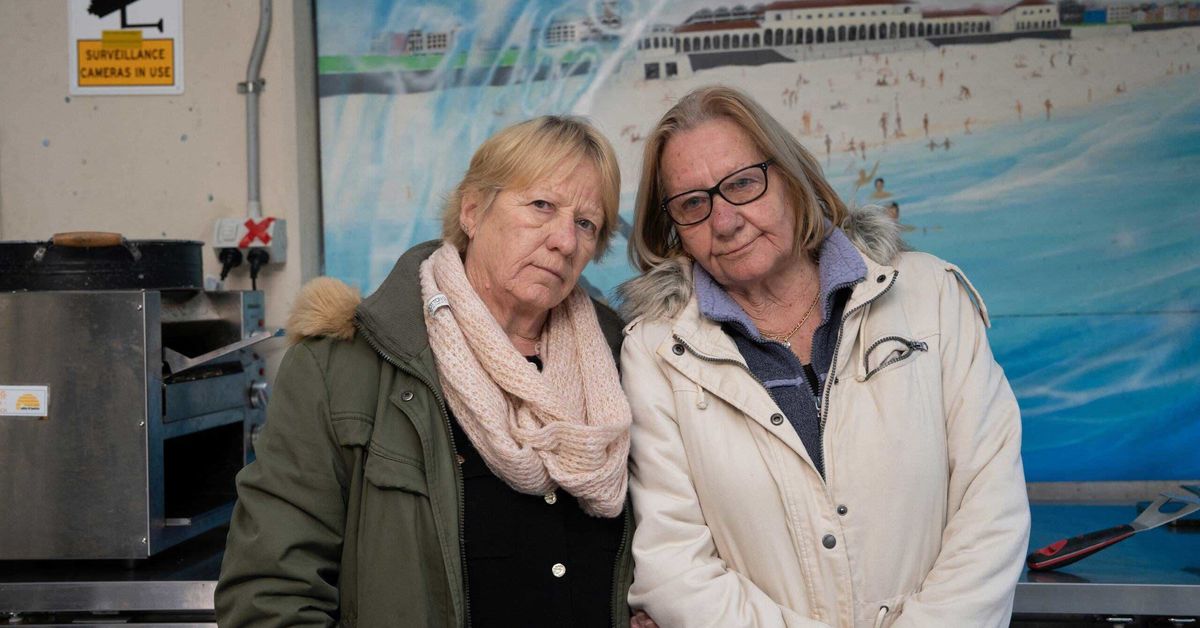

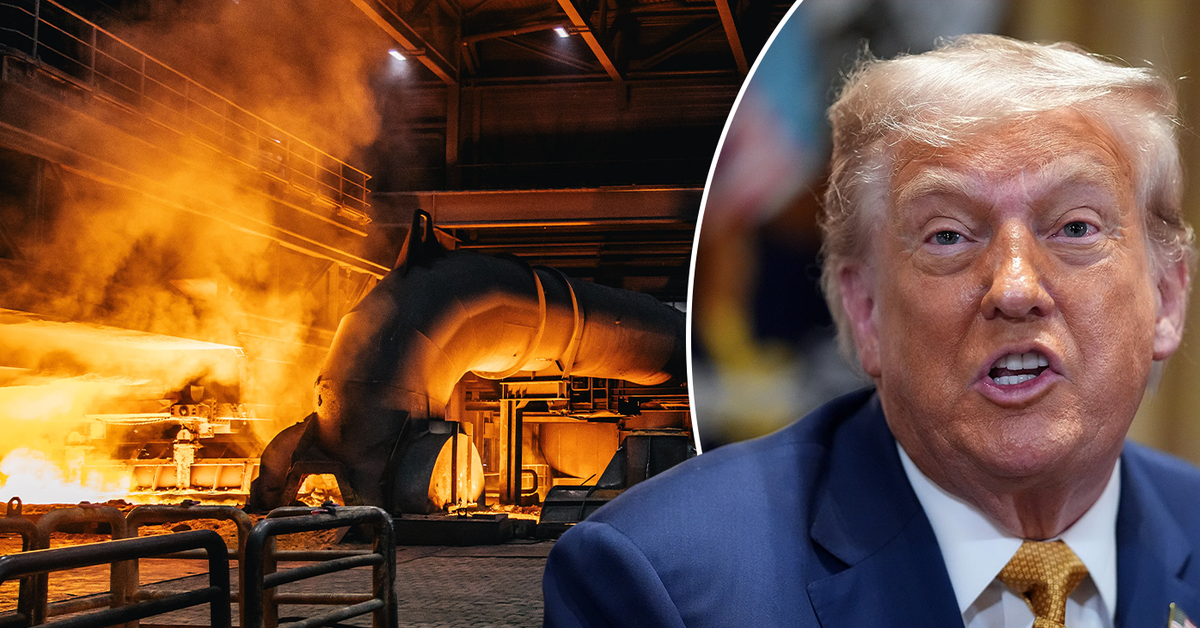


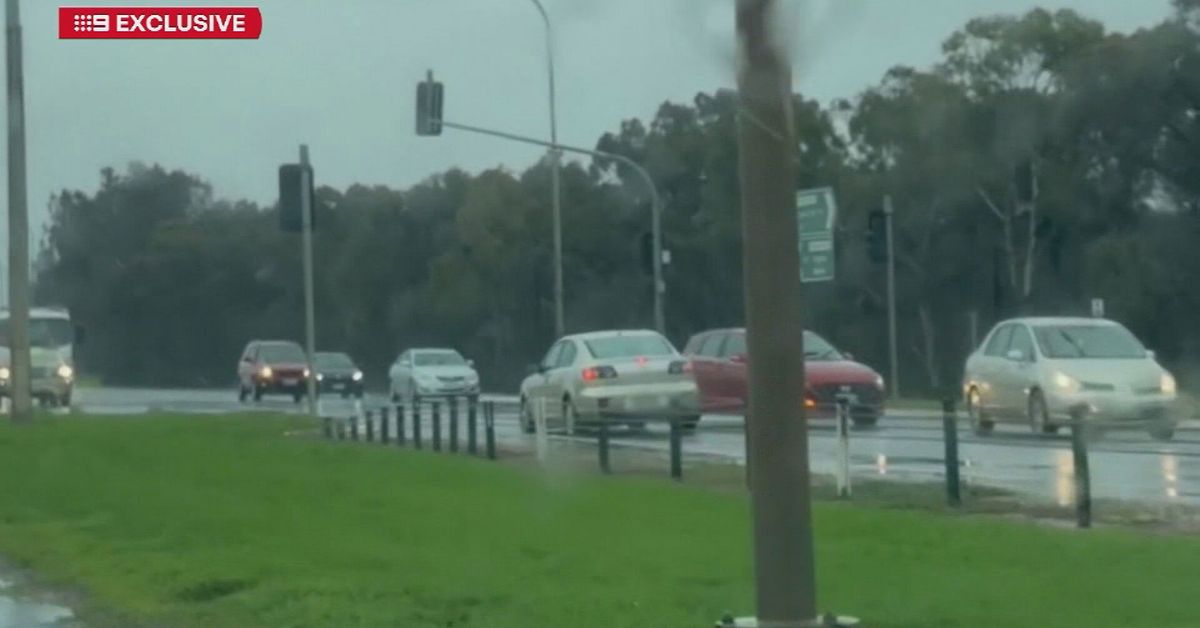


 English (US) ·
English (US) ·  French (CA) ·
French (CA) ·  French (FR) ·
French (FR) ·